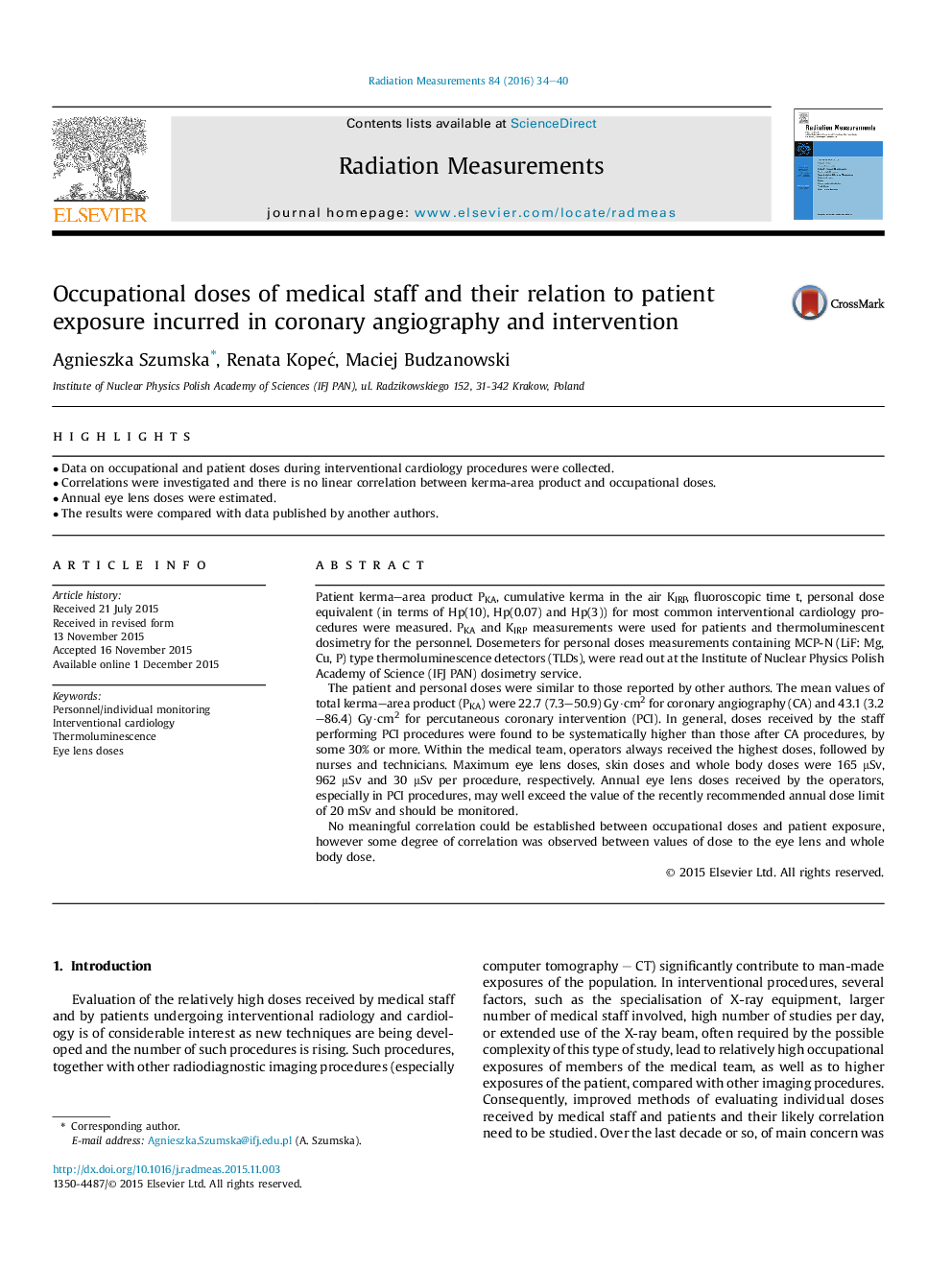| کد مقاله | کد نشریه | سال انتشار | مقاله انگلیسی | نسخه تمام متن |
|---|---|---|---|---|
| 1884509 | 1533406 | 2016 | 7 صفحه PDF | دانلود رایگان |
• Data on occupational and patient doses during interventional cardiology procedures were collected.
• Correlations were investigated and there is no linear correlation between kerma-area product and occupational doses.
• Annual eye lens doses were estimated.
• The results were compared with data published by another authors.
Patient kerma–area product PKA, cumulative kerma in the air KIRP, fluoroscopic time t, personal dose equivalent (in terms of Hp(10), Hp(0.07) and Hp(3)) for most common interventional cardiology procedures were measured. PKA and KIRP measurements were used for patients and thermoluminescent dosimetry for the personnel. Dosemeters for personal doses measurements containing MCP-N (LiF: Mg, Cu, P) type thermoluminescence detectors (TLDs), were read out at the Institute of Nuclear Physics Polish Academy of Science (IFJ PAN) dosimetry service.The patient and personal doses were similar to those reported by other authors. The mean values of total kerma–area product (PKA) were 22.7 (7.3–50.9) Gy·cm2 for coronary angiography (CA) and 43.1 (3.2–86.4) Gy·cm2 for percutaneous coronary intervention (PCI). In general, doses received by the staff performing PCI procedures were found to be systematically higher than those after CA procedures, by some 30% or more. Within the medical team, operators always received the highest doses, followed by nurses and technicians. Maximum eye lens doses, skin doses and whole body doses were 165 μSv, 962 μSv and 30 μSv per procedure, respectively. Annual eye lens doses received by the operators, especially in PCI procedures, may well exceed the value of the recently recommended annual dose limit of 20 mSv and should be monitored.No meaningful correlation could be established between occupational doses and patient exposure, however some degree of correlation was observed between values of dose to the eye lens and whole body dose.
Journal: Radiation Measurements - Volume 84, January 2016, Pages 34–40
